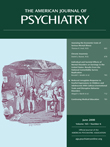To The Editor: We thank Drs. Favaro and Santonastaso for their comments on our article. They suggest that we supported the removal of the subtyping schema for anorexia nervosa. Indeed, we found that crossover between anorexia nervosa subtypes was frequent (in approximately 50% of patients), recurrent, bi-directional, and likely to occur throughout follow-up. These findings do not support the current DSM-IV-TR subtyping criteria, since most individuals with chronic anorexia nervosa will experience periods of restriction, bingeing, and/or purging over time. However, we recognize that a subset of individuals with anorexia nervosa do not cross over, and we encourage future investigation of the nature of meaningful differences (e.g., prognostic, genetic) between individuals who do and do not cross over. Additionally, we support research that might clarify diagnostic thresholds for anorexia nervosa subtypes. It is possible that the true boundary between these subtypes lies between individuals who do and do not engage in any bingeing/purging behaviors during the first 5 years of illness or, alternatively, between those individuals who do or do not engage in bingeing, irrespective of purging.
Our longitudinal sample was comprised of treatment-seeking individuals with a mean duration of illness of 6 years (SD=5.30). The number of individuals with binge eating/purging-type anorexia nervosa (N=48) was greater than that of individuals with restricting-type anorexia nervosa (N=40). Our sample was not likely representative of community or clinical samples with short durations of illness. However, we observed crossover rates that were similar to those reported previously in treatment-seeking (e.g.,
1,
2) and non-treatment-seeking
(3) samples—including a sample in a study conducted by Drs. Favaro and Santonastaso
(4) —which may diminish concerns pertaining to recruitment bias.
Finally, while it was not possible to examine the effects of treatment on crossover in our study, we agree that this is an important endeavor. Given that crossover was less frequent in a treated sample of individuals with anorexia nervosa in a study conducted by Tenconi et al.
(5), it would be useful to continue to follow this particular study group to consider possible factors that might protect against crossover. The question as to whether change in symptom profiles over a 3-month period is best characterized as 1) diagnostic crossover or, instead, 2) change in the presentation in a single disorder is precisely the question we hoped to raise in our article. Given the ease with which patients transition between restricting- and binge eating/purging-type anorexia nervosa, we would argue that for most patients, this shift represents a change in illness phase rather than a change in disorder.
We are hopeful that these data, in combination with ongoing studies aimed at describing eating disorder phenotypes, can be helpful in informing DSM-V and guiding future etiological and treatment research in this area.

